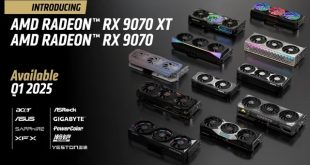Typically when buying a new PC case, it ships pre-assembled and ready for use. InWin's iBuildiShare series of cases goes in a different direction, with foldable parts so that you can put your PC case together yourself, using 0.8mm SECC steel sheets that you can shape to your liking.
DIY PC builders of all ages may use this bright modular kit to create a Mini-ITX chassis by bending and moulding each panel. The panels can go through several bends, allowing you to correct or adjust them as needed. POC is delivered flat-packed, which reduces packing materials and weight.
This tiny container conserves desk space while being compatible with bulky systems. POC can accommodate regular ATX PSUs (up to 160mm long) and graphics cards up to 346mm long. The specialised GPU chamber efficiently isolates graphics card heat from the rest of the system. The POC even includes a PCI-Express 4.0 riser cable for it.
The changeable triangle vent tabs on the side panels of the POC let users adjust the airflow as needed. An InWin LUNA AL120 A-RGB fan is included for cooling. Once completed, side-mounted handles are supplied for transporting. This eye-catching PC case comes in blue/black and green/yellow patterns.
The POC is exclusive to InWin's online store. The POC Mini-ITX Tower is now available for $95.00/€99.00 in both colour options. If you order one before May 8th, you can get a Batmat (€25) and a Nomic mouse (EU store purchases only) for an extra €10.
KitGuru says: The POC isn't the first PC case to arrive in modular foldable parts. However, it's considerably cheaper compared to others.
 KitGuru KitGuru.net – Tech News | Hardware News | Hardware Reviews | IOS | Mobile | Gaming | Graphics Cards
KitGuru KitGuru.net – Tech News | Hardware News | Hardware Reviews | IOS | Mobile | Gaming | Graphics Cards

